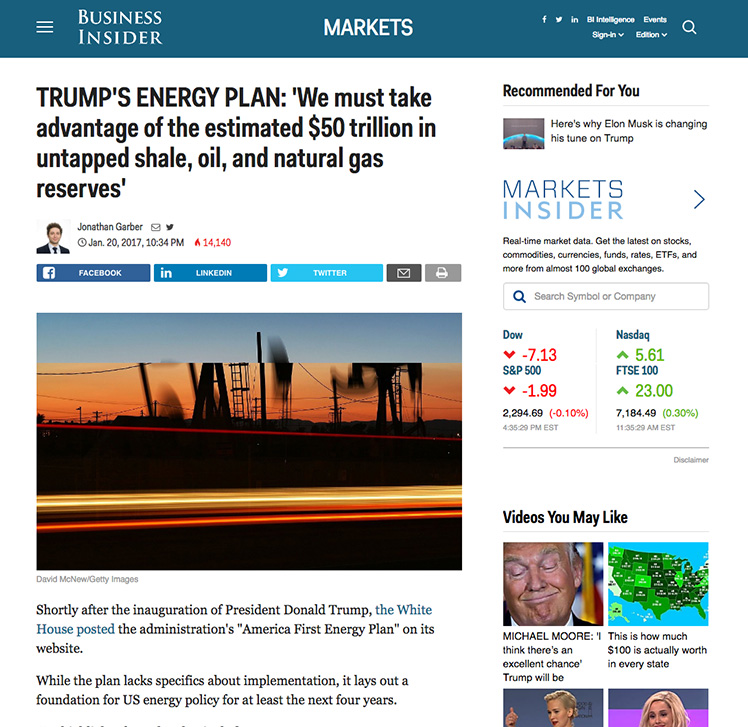T. Boone Pickens: True Energy Independence For America lweb.es/f2654 02.17.2017
Oil expert T. Boone Pickens says that America is in the midst of an energy renaissance, and President Donald Trump will have the opportunity to set the nation on a course toward self-sufficiency: “We are still a long way from securing our nation’s energy future and are not without risk of failing” he states. “I suggest President Trump pursue an energy plan with two parts. The first part is to not screw up what we have going for us. The second part is to not settle for what we’ve done so far.”
Details

